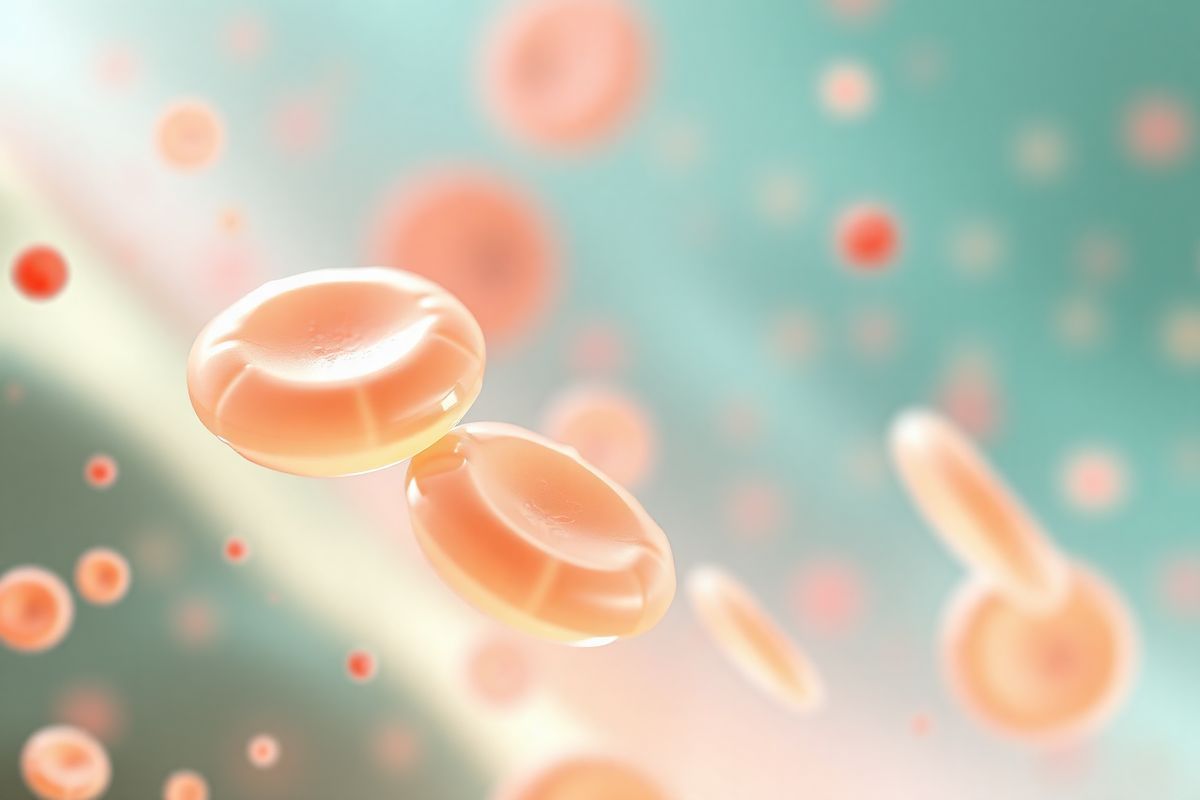Table of Contents
What is thrombocytopenia? A Deep Dive into Low Platelet Count

thrombocytopenia is defined as a condition characterized by an abnormally low platelet count in the blood. Platelets, also known as thrombocytes, are crucial for normal blood clotting. They play an essential role in hemostasis, which prevents bleeding when injuries occur. A normal platelet count ranges from 150,000 to 450,000 platelets per microliter of blood. A count below 150,000/μL is considered thrombocytopenia, with severe cases defined as having a platelet count below 20,000/μL (Healthline, 2023).
The reduction in platelet count can stem from three primary mechanisms:
-
Decreased Production: Platelets are produced in the bone marrow. Conditions like leukemia, certain types of anemia, viral infections, heavy alcohol use, and exposure to toxic chemicals can impair the bone marrow’s ability to produce platelets (Healthdirect, 2023).
-
Increased Destruction: The body may destroy platelets faster than they can be produced. This can occur due to autoimmune diseases (e.g., lupus, rheumatoid arthritis), infections, or reactions to certain medications (Healthline, 2023).
-
Sequestration: An enlarged spleen, often due to liver disease or hematological cancers, can trap excessive numbers of platelets, thereby reducing their availability in the bloodstream (Healthdirect, 2023).
Understanding the underlying cause of thrombocytopenia is critical for effective treatment and management.
Recognizing the Symptoms: How Low Platelet Count Affects Your Health
Symptoms of thrombocytopenia can range from mild to severe, depending on the platelet count. Many individuals with mild thrombocytopenia may remain asymptomatic, while others may experience significant bleeding complications when the platelet levels drop significantly. Common symptoms include:
- Easy Bruising: Individuals may notice that they bruise more easily than normal, with bruises appearing without apparent cause.
- Petechiae: Small, round, red or purple spots on the skin can indicate capillary bleeding due to low platelet levels.
- Prolonged Bleeding: Cuts may bleed for longer than expected, and minor injuries may result in excessive bleeding.
- Nosebleeds and Bleeding Gums: Frequent nosebleeds or bleeding during dental hygiene can occur.
- Heavy Menstrual Bleeding: Women may experience heavier than normal menstrual periods (Healthline, 2023).
In severe cases, thrombocytopenia can lead to internal bleeding, which may be life-threatening. Symptoms of internal bleeding may include:
- Blood in urine or stool
- Persistent headaches or neurological symptoms, especially if a brain bleed is suspected
Immediate medical intervention is required if severe symptoms manifest.
TablCommon Symptoms of Thrombocytopenia
| Symptom | Description |
|---|---|
| Easy Bruising | Unexplained bruises appearing on the skin |
| Petechiae | Small, red or purple spots caused by bleeding under the skin |
| Prolonged Bleeding | Cuts or injuries bleeding longer than usual |
| Nosebleeds | Frequent occurrences of nosebleeds |
| Bleeding Gums | Gums bleeding during brushing or spontaneously |
| Heavy Menstrual Bleeding | Increased menstrual flow or duration |
Common Causes of Thrombocytopenia: From Medications to Medical Conditions
thrombocytopenia can occur due to various factors, including medications, medical conditions, and environmental influences. Here are some of the most common causes:
-
Medications: Certain drugs can induce thrombocytopenia as a side effect. Common culprits include:
- Antibiotics (e.g., penicillin)
- Chemotherapy agents
- Heparin, which may lead to a condition known as heparin-induced thrombocytopenia (HIT) (Healthline, 2023).
-
Medical Conditions:
- Aplastic Anemia: A serious condition where the bone marrow fails to produce adequate blood cells.
- Autoimmune Disorders: Conditions such as immune thrombocytopenic purpura (ITP) can cause the immune system to mistakenly attack platelets.
- Cancers: Diseases like leukemia and lymphoma can compromise the bone marrow and lead to low platelet production (Medical News Today, 2023).
-
Infections: Viral infections, such as HIV, hepatitis, and certain types of influenza, can affect platelet production directly or through immune-mediated destruction (Healthdirect, 2023).
-
Nutritional Deficiencies: Deficiencies in vitamins such as B12 and folate can impair the production of platelets (Healthline, 2023).
-
Pregnancy: It is common for pregnant women to experience mild thrombocytopenia, particularly in the later stages (Medical News Today, 2023).
Treatment Options for Thrombocytopenia: Managing and Overcoming Low Platelet Count

The treatment for thrombocytopenia primarily depends on its underlying cause. Here are some common approaches:
-
Observation: In cases of mild thrombocytopenia without significant symptoms, doctors may recommend regular monitoring without immediate treatment (Healthline, 2023).
-
Medication Adjustment: If a specific medication is causing low platelet levels, adjusting the dosage or switching to an alternative medication may resolve the issue (OneBlood, 2023).
-
Corticosteroids: For autoimmune conditions like ITP, corticosteroids can help increase platelet counts by suppressing the immune response that destroys platelets (Medical News Today, 2023).
-
Platelet or Blood Transfusions: In severe cases, platelet transfusions may be necessary to quickly raise platelet counts and prevent bleeding complications (Healthdirect, 2023).
-
Spleen Removal (Splenectomy): In cases where the spleen is sequestering too many platelets, surgical removal of the spleen may be indicated (Healthline, 2023).
-
Immunoglobulin Therapy: Intravenous immunoglobulin (IVIG) may be used to increase platelet counts in certain conditions, particularly in acute cases (Medical News Today, 2023).
-
Newer Therapies: Emerging treatments, including targeted therapies and monoclonal antibodies, are being explored for various types of thrombocytopenia.
TablTreatment Options for Thrombocytopenia
| Treatment Option | Description |
|---|---|
| Observation | Regular monitoring without treatment for mild cases |
| Medication Adjustment | Changing or stopping medications causing low platelet count |
| Corticosteroids | Reducing immune response in autoimmune conditions |
| Platelet Transfusion | Immediate increase in platelet counts for severe cases |
| Spleen Removal | Surgery to prevent excessive sequestration of platelets |
| Immunoglobulin Therapy | Boosting platelet counts in certain conditions |
| Newer Therapies | Investigational treatments tailored to specific conditions |
Prevention and Lifestyle Adjustments: Safeguarding Against Thrombocytopenia
Preventing thrombocytopenia involves addressing its risk factors and underlying causes. Here are some lifestyle adjustments and preventative measures:
-
Regular Check-ups: For individuals at risk of thrombocytopenia, regular blood tests can help monitor platelet levels and detect issues early on (Healthdirect, 2023).
-
Medication Awareness: Always discuss the potential side effects of medications with healthcare providers. Avoid over-the-counter medications like aspirin without consulting a doctor (UPMC Hillman Cancer Center, 2023).
-
Healthy Diet: Ensuring adequate intake of vitamins and minerals, particularly B12 and folate, can support platelet production (OneBlood, 2023).
-
Limit Alcohol Consumption: Excessive alcohol can impair platelet production; moderation is key (Healthline, 2023).
-
Avoid Risky Activities: People with known low platelet counts should avoid activities that increase the risk of bleeding, such as contact sports (UPMC Hillman Cancer Center, 2023).
-
Seek Immediate Care: If symptoms of severe bleeding or low platelet count appear, seek medical attention promptly (Healthdirect, 2023).
FAQ
What is thrombocytopenia?
Thrombocytopenia is a condition characterized by low levels of platelets in the blood, which can lead to increased bleeding risks.
What are the symptoms of thrombocytopenia?
Symptoms include easy bruising, prolonged bleeding from cuts, nosebleeds, bleeding gums, and in severe cases, internal bleeding.
What causes low platelet count?
Common causes include medications, medical conditions (like leukemia and autoimmune diseases), infections, and nutritional deficiencies.
How is thrombocytopenia treated?
Treatment varies based on the cause and severity and may include observation, medication adjustments, corticosteroids, transfusions, or spleen removal.
How can I prevent thrombocytopenia?
Preventive measures include regular check-ups, being cautious with medications, maintaining a healthy diet, and avoiding high-risk activities.
References
- Healthline. (2023). What causes a low platelet count? Retrieved from https://www.healthline.com/health/thrombocytopenia
- Healthdirect. (2023). Thrombocytopenia. Retrieved from https://www.healthdirect.gov.au/thrombocytopenia
- Medical News Today. (2023). What causes a low platelet count (Thrombocytopenia)? Retrieved from https://www.medicalnewstoday.com/articles/314123
- UPMC Hillman Cancer Center. (2023). Low Platelet Count (Thrombocytopenia). Retrieved from https://hillman.upmc.com/patients/community-support/education/miscellaneous/low-platelet-count
- OneBlood. (2023). What Causes a Low Platelet Count? Retrieved from https://www.oneblood.org/blog/what-causes-a-low-platelet-count.html











